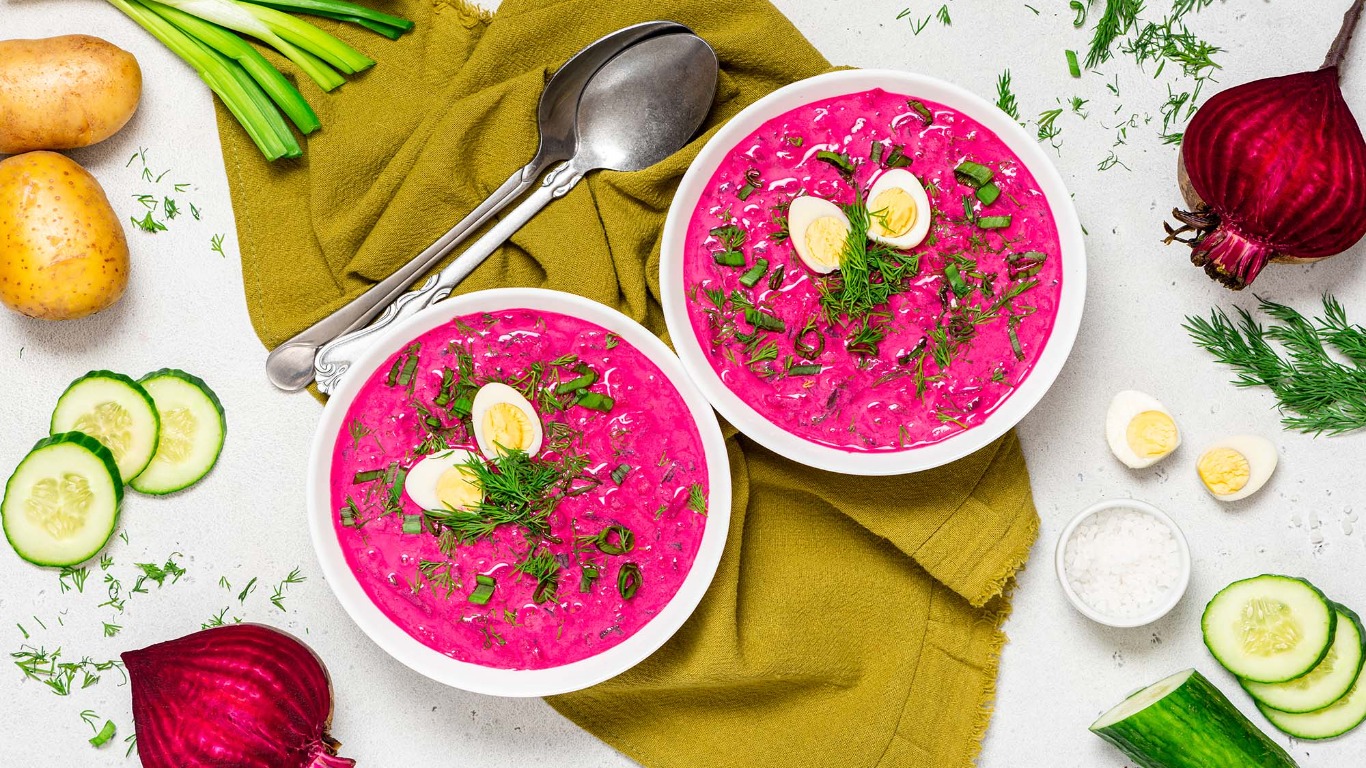A local's guide to food and drink in Latvia
Perched on the Baltic coast, Latvia might be small and too often overlooked as a holiday destination but its cuisine is as diverse as its history. From smoked, cured and grilled riches of the sea to hearty, meaty numbers with origins in the Caucasus region, Latvian native and writer Karlina Valeiko takes you through what culinary delights compact country has to offer.
What's so special about Latvian food?
Any Latvian will tell you that we’ve forged a very special relationship with nature – we pick, hunt, forage, smoke, cure, pickle and ferment everything we can get our hands on. With four distinct seasons, it’s seasonality that dictates what’s on our plates. Spring brings mountains of baby vegetables, almost nothing but freshly-picked berries are eaten in summer and apple harvest in autumn marks the start of winter food prep. Once a thick layer of snow covers the ground and temperatures fall as low as -20°C (-4°F) and beyond, we raid our store cupboards and dig into jars of pickled veg, chutneys and jams. Latvian food is all about comforting, soul-soothing and caring home cooking with every bite resembling a warm hug.
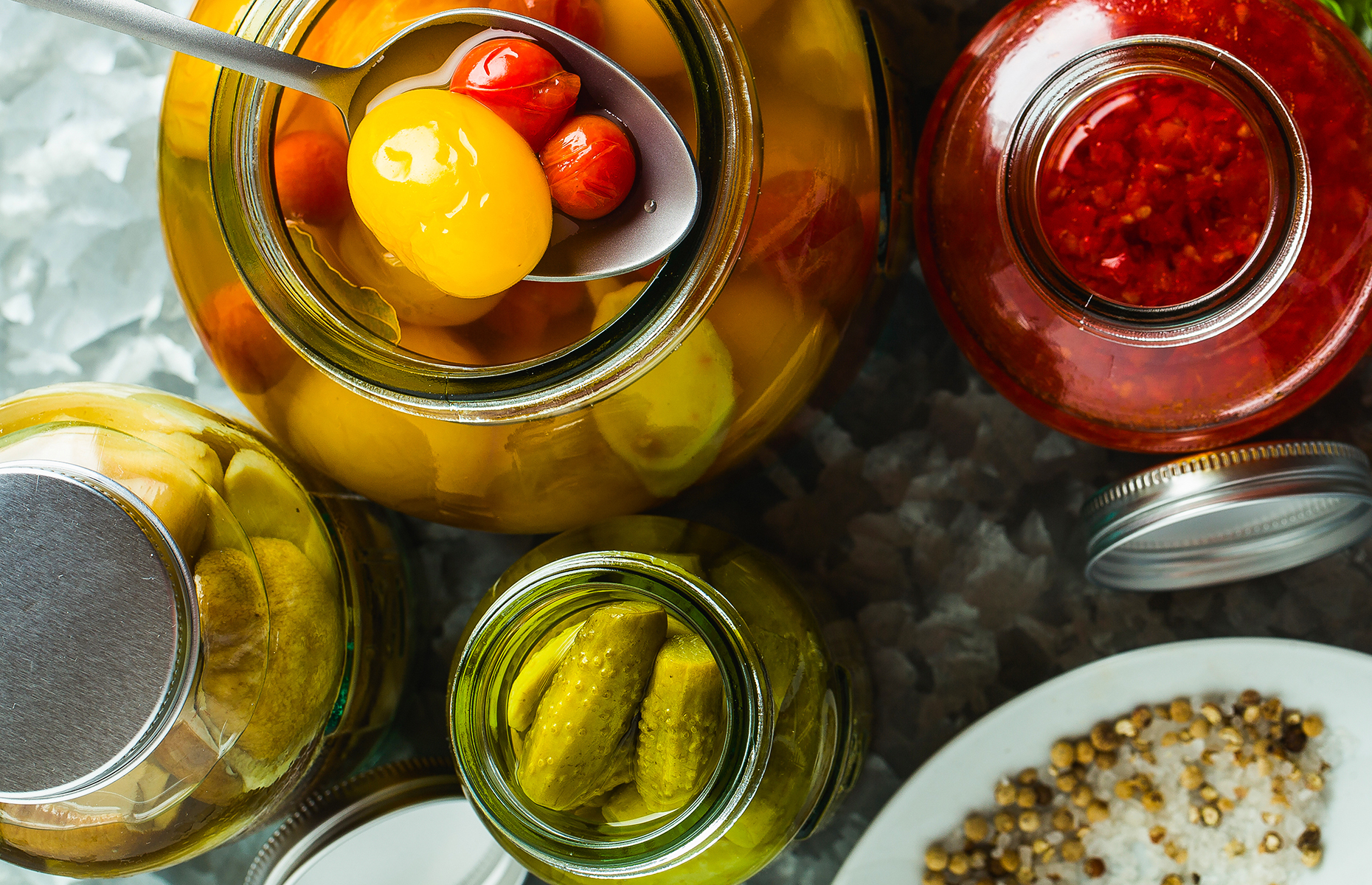
IriGri/Shutterstock
READ MORE: A local's guide to exploring Riga
Top 5 ingredients in Latvia
Potatoes
A humble vegetable, you’ll find potatoes as a side to most mains throughout the year. In summer, new potatoes are parboiled, then sautéed in butter with chopped dill, or wrapped in foil and roasted skin-on in the coals of a fire pit. The end of summer is defined by potato harvest when city dwellers flock to the countryside to help relatives pick the last of the summer’s offering, returning home with enough bags of spuds to last them until spring. During winter, potatoes are boiled, pan-fried, turned into creamy mash or grated into röstis.
Pork
Pork is not only Latvia's but the wider region's protein of choice, largely due to the fact that other meats historically have been more expensive. Plus, Latvians have certainly found a way to diversify their cuisine using the same ingredient – I can easily think of at least 20 different pork dishes that each taste differently. Childhood favourites include a cream sauce with pork mince and onions and pork schnitzel. These days, whenever I visit Latvia, I’m on the lookout for pork kotletes – a cross between a burger and a meatball. Every cook in Latvia has their own secret recipe and I love to add finely chopped dill for a herby flavour and a dollop of sour cream and milk-soaked white bread to keep the patty soft and juicy.
Try these pork medallions with crème fraîche and mustard sauce
Dry-curd cottage cheese
Quite possibly one of the most versatile ingredients in any Latvian fridge, this unique type of cheese can be used in both sweet and savoury dishes. A popular breakfast food, it can be mixed with jam or sour cream and eaten with various toppings like seeds or finely sliced radishes. It’s a classic side to a Swedish-inspired marinated herring and boiled potato dish and can also be used to make pancakes or dumplings. This type of cottage cheese is often used in a variety of desserts too, especially cakes and traybakes. In one of the most popular sweet treats, biezpienmaize, cottage cheese is mixed with double cream, eggs and raisins and baked in a square tin with a shortbread-like base. The final result resembles a dish not dissimilar to the Jewish baked cheesecake.

Timolina/Shutterstock
Tomatoes and cucumbers
It’s not a Latvian allotment if there isn’t a mini greenhouse with tomatoes and cucumbers. The quintessential taste of Latvian summer is a garden salad made with roughly chopped cucumbers and tomatoes, dill and sour cream. Come end of summer, Latvian kitchens are turned into pickling factories, preserving as much of the summer’s bounty for winter as possible. Tomatoes are sliced and stacked in jars with white onions rings, pickled or turned into a variety of chutneys and relishes, while cucumbers are pickled or shredded into fermented slaws.
Summer berries
Latvian summers can be painfully short, with the warmest and sunniest weather only lingering between the end of June to late August, but they’re definitely sweet with a generous offering of summer berries. Strawberries, raspberries, blackberries, blackcurrants and gooseberries all make an appearance in light summer desserts and are later made into a variety of jams and jellies for winter. Foraging for berries also runs deep in the Latvian culture, with forests full of wild strawberries, blueberries, redcurrants, lingonberries and cloudberries. For me, nothing beats a bowl of berries with fresh milk and a light sprinkling of sugar on a hot summer's day.
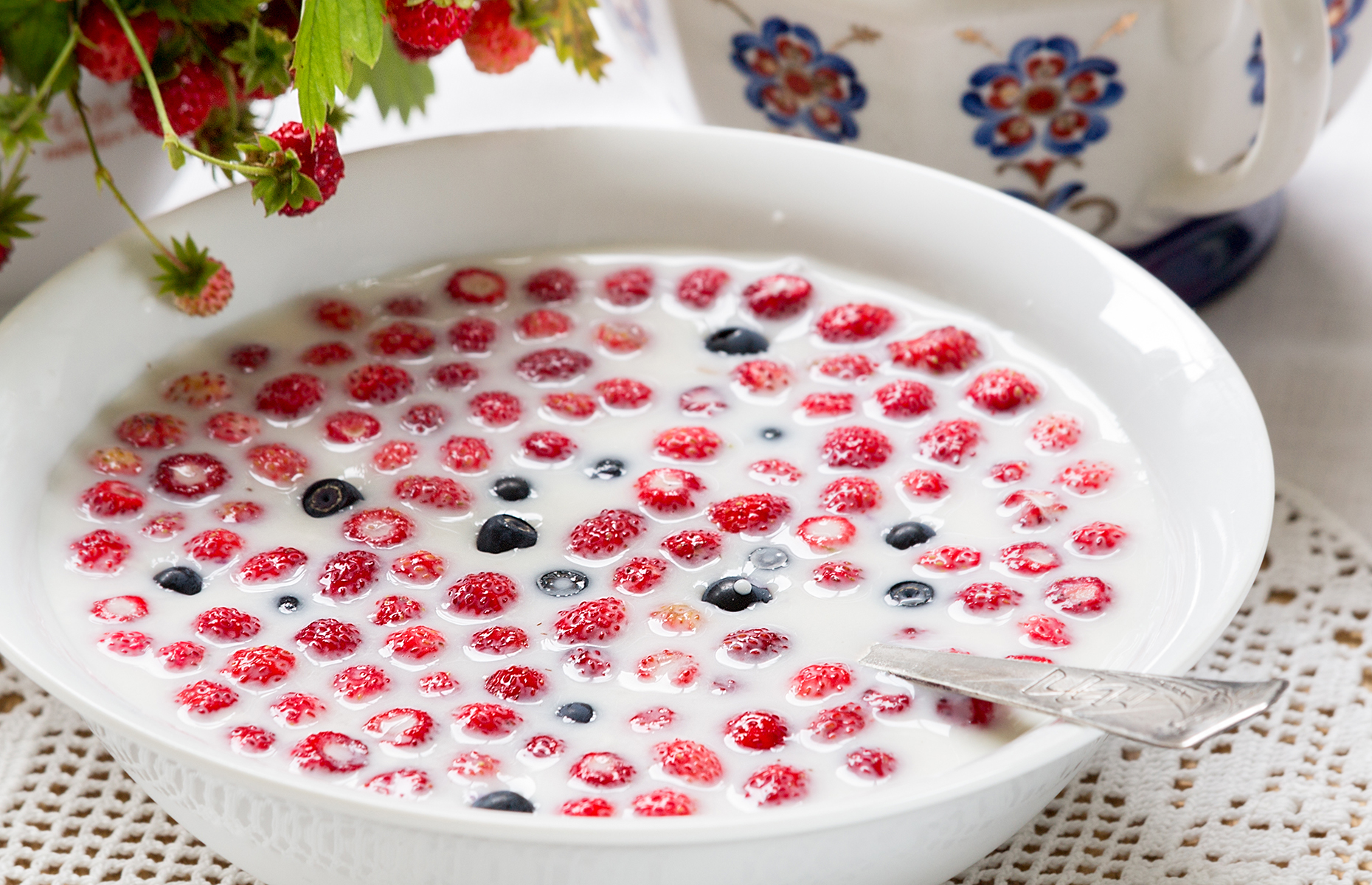
What dishes to try in Latvia
Stewed sauerkraut
Hot stewed sauerkraut is a winter staple, especially around Christmas. Unlike German sauerkraut, the Latvian version can be made with a choice of different types of pickle used to ferment the cabbage – the dominating flavour in the pickle can be sweet, salty or sour. When stewing sauerkraut, it’s most important to fry off a base of onions and cubed pork belly that’ll help develop a rich, comforting flavour. Other common additions include caraway seeds and grated carrot. A classic sauerkraut meal includes soft-boiled potatoes and a fried smoked sausage or an oven- or pit-roasted meat – order a roasted pig’s snout or knuckle if you see one.
Rye bread pudding
A beloved dessert, this unusual pudding combines tangy, sweet and savoury flavours. The layered dish is made with thick cranberry or lingonberry sauce, sugary whipped cream and crunchy fine black rye bread crumble and is unique to Latvia. Often served at family gatherings, this is another recipe that has as many variations as home cooks who make it and has recently become a chefs' favourite in restaurants serving modern Latvian cuisine.
Smoked fish
With the Baltic Sea on our doorstep, several large rivers snaking their way through the country and countless lakes peppered across the land, there’s an abundance of fish in Latvia. Fishermen in villages along the Baltic Sea coast have been hot- or cold-smoking their catch of the day for centuries. Particular attention is paid to the wood used to create the smoke as it has a big impact on flavour – most popular types include alder, birch and maple. If you don't venture further than the capital Riga, a trip to the Riga Central Market is essential to bag one of these beauties.
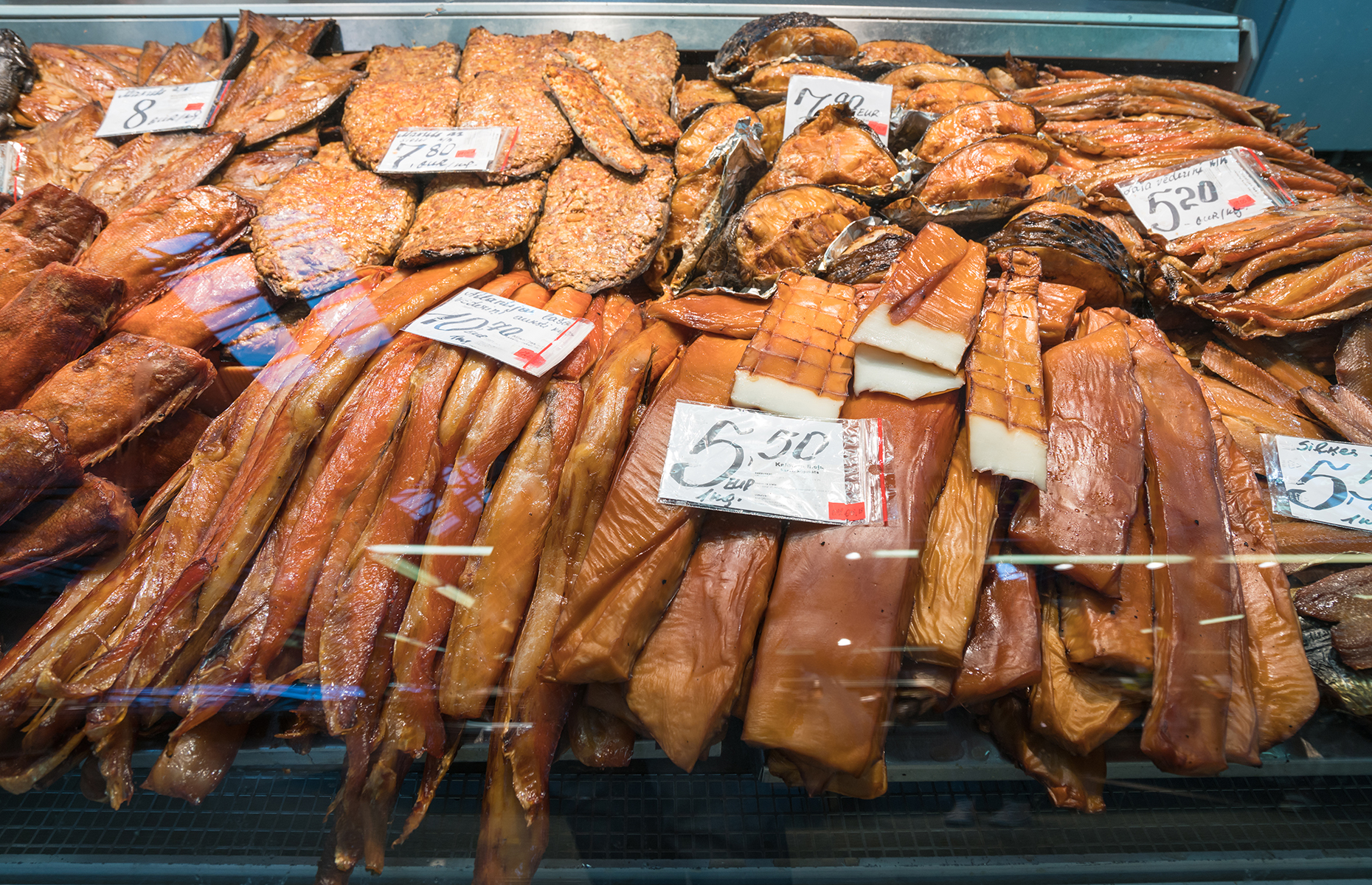
Cold beetroot soup
This brilliant soup has its roots in Russian cuisine but is is eaten all over the region and if you come to Latvia in summer, there's no escaping it. It's another dish with nearly endless ways of making it, but the essentials – pickled beetroot, cucumber, egg and frankfurter-like sausage – remain a constant. My favourite is made with a base of kefir (a fermented milk drink with a thick consistency) and a dollop of mustard for a more piquant flavour. It's then finished with a generous helping of spring onion and dill and served with hot, pan-fried potatoes on the side.
READ MORE: A complete guide to kefir
Grey peas with speck
An indispensable part of Christmas, this dish has been around for centuries and is one of the few recipes that’s not borrowed or adapted from a different culture. Historically, Latvians were peasants ruled by foreign powers and during this time, a typical diet was mostly vegetarian with small amounts of meat eaten only on special occasions. Similar to chickpeas, grey peas are soaked and then boiled before a stew with fried onions and cubed speck (a type of smoked fatty bacon made from pork belly) is made. It’s a very hearty meal and a much-loved comfort food during the cold, gloomy winters.
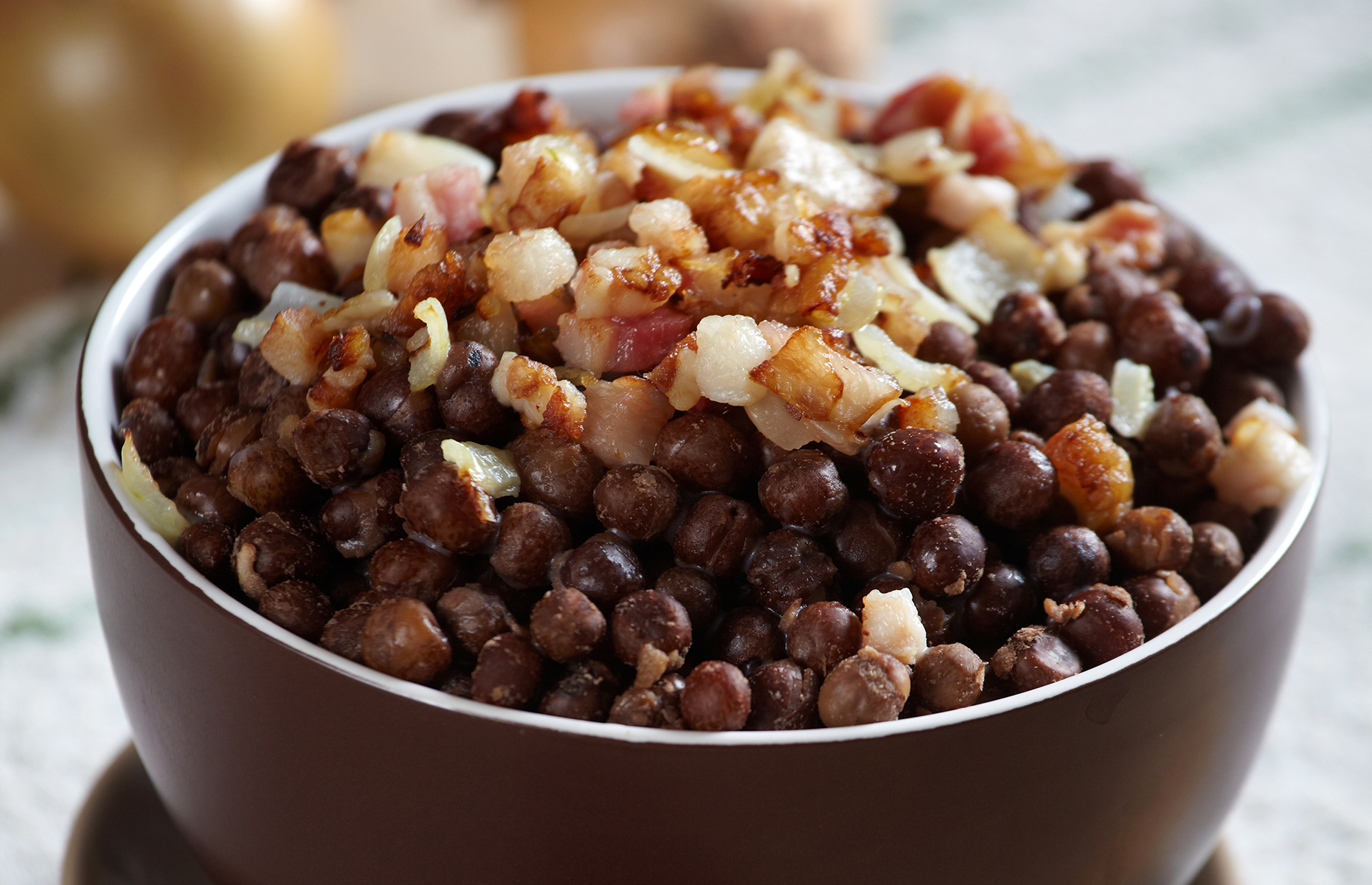
What to drink in Latvia
Beer
The abundance of grains grown in the flat farmlands of Latvia means that every city, mid-sized town and country house has its own brewery. Many types of beer are produced all across Latvia, from a pale lager to a German-style dunkel. However, the most popular and, frankly, the best beer is ‘live beer’ – unfiltered and unpasteurised lager. It has grown in popularity in the last decade, meaning Riga’s coolest bars will have a selection of these craft beers on tap.
Riga Black Balsam
A herbal bitters liqueur made from mixing vodka and natural ingredients, like herbs, flowers and berries, Riga Black Balsam is a staple we love to gift our foreign friends. It can be enjoyed on the rocks, even though it has a serious kick (it has an ABV of 45%) or, ideally, with blackcurrant juice. It can also be made into a warming wintery cocktail with the balsam boiled with apple juice and cinnamon or lemon peel – something reminiscent of a hot toddy.
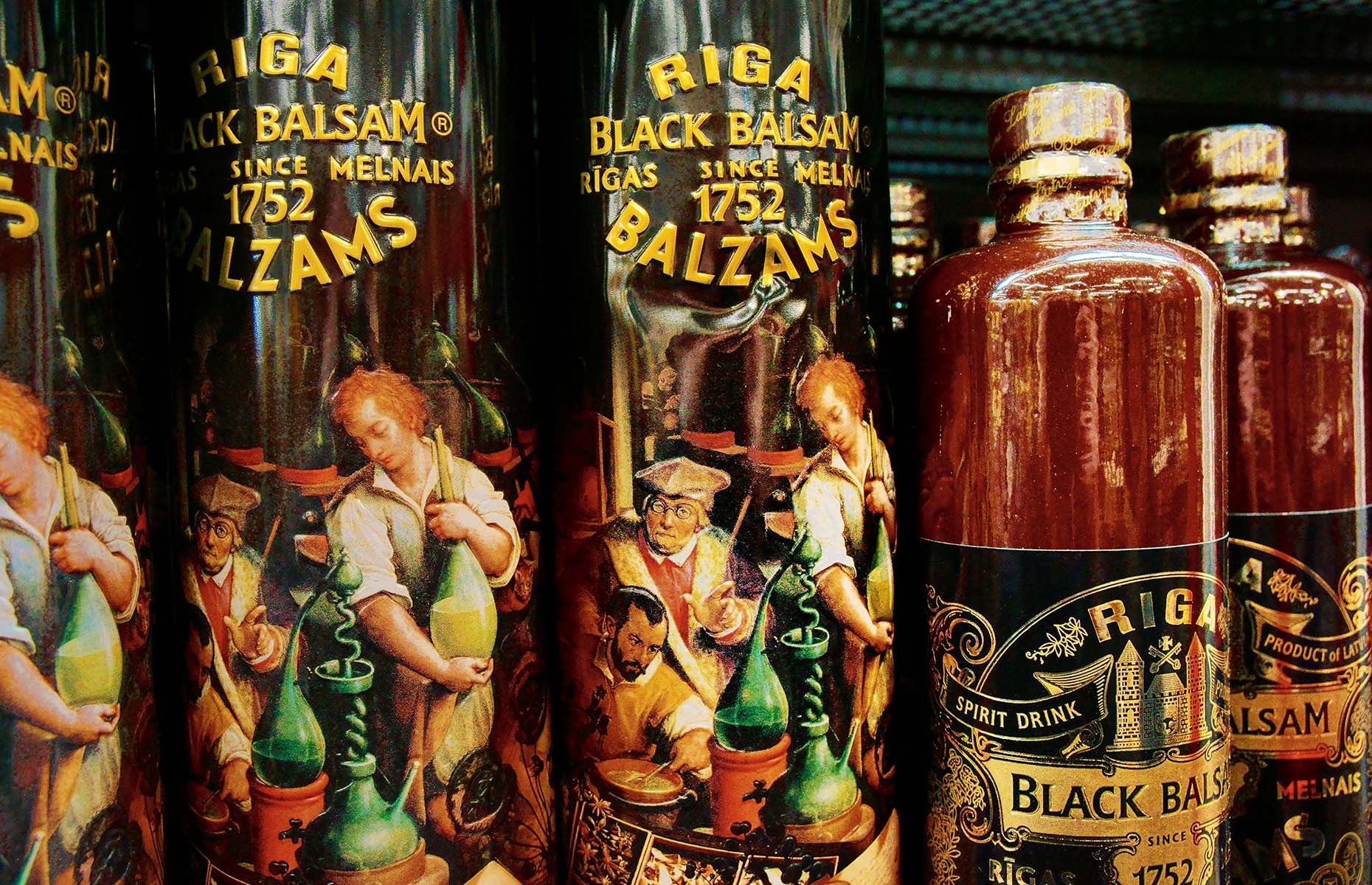
Herbal tea
Most Latvians can pride themselves on owning a tea box with a rather extensive selection of herbal teas. Part of our connection with nature means we believe in the natural properties of various plants so lots of these herbal teas are used as natural remedies for a variety of ailments. Chamomile and peppermint are among the more popular, however, dried linden flowers, rose hip and echinacea plants are common as well.
All about preserving
Historically, the long and harsh winters meant food was scarce and people had to find ways to preserve enough of the summer’s harvest to help them through the colder months. This tradition of fermenting, preserving, curing and pickling still lives on. When it comes to vegetables, fruit and berries, there isn’t much produce that a Latvian can't preserve. One of the top things to try, that’s quite unique to Latvia, is cucumbers cured in salted water. The cucumbers are submerged in boiling salted water with garlic cloves, black peppercorns and lots of dill stems and then left to chill for a few hours. The cured cucumber still retains its bright green colour and crunchiness but has a deliciously salty flavour.
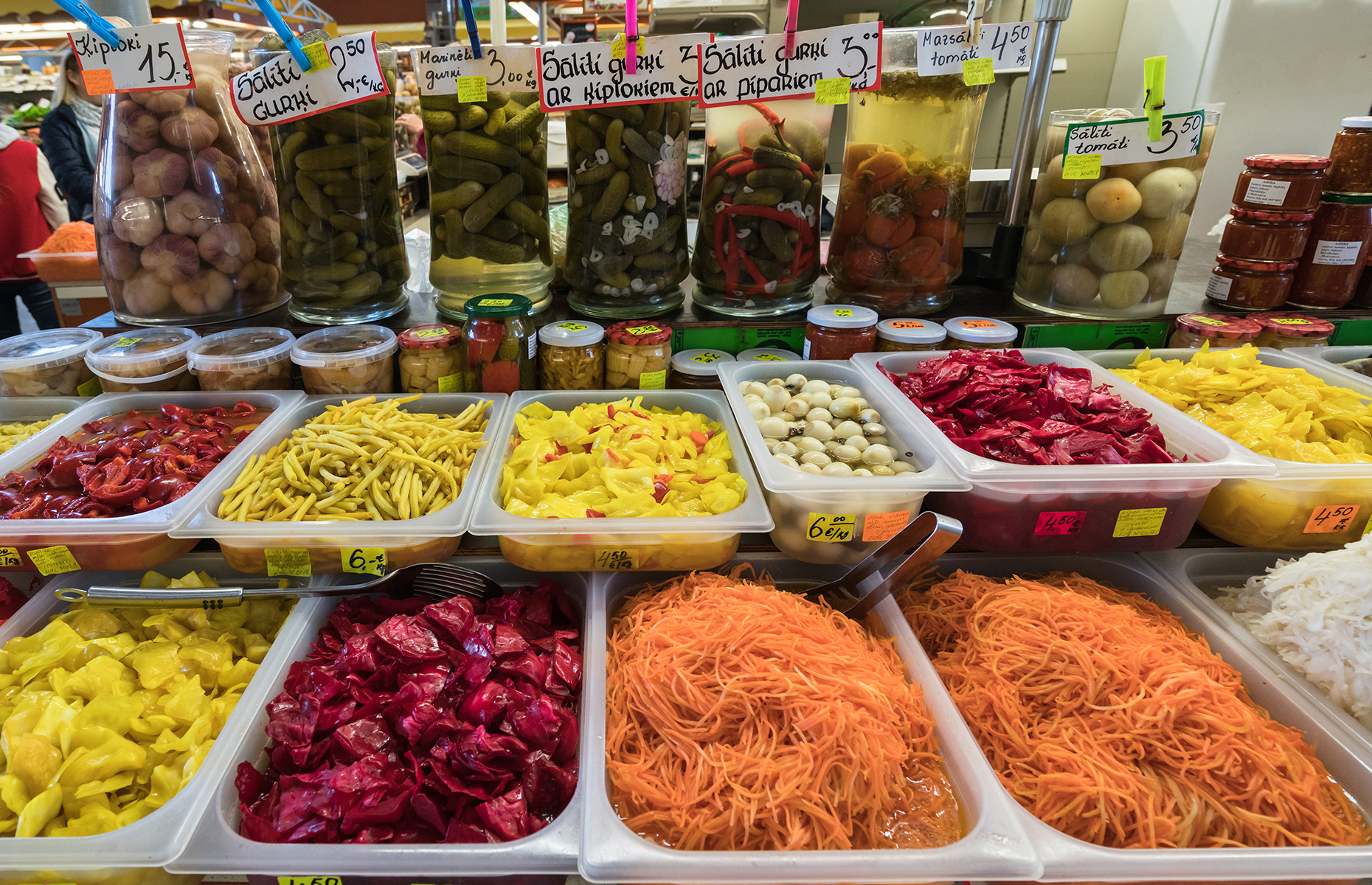
Where to eat in Latvia
Casual
Lido: A homely and friendly bistro-style eatery, Lido is a popular lunch and dinner destination among locals and visitors alike. Expect rustic wooden tables, servers dressed in traditional Latvian dress and lots of beige, carby and incredibly delicious food. Conveniently, there are a few Lido outposts scattered throughout the city (main course palte with meat is around £4.20).
Key to Riga: A traditional restaurant set to the medieval backdrop of Old Riga, it serves big, hearty meals that have been eaten in this region for centuries. If you’re ever going to go all out and have a whole roasted pork shank with potatoes and hot stewed sauerkraut, this where to do it (mains £13-19).
Annas Dārzs: Especially popular in summer, this charming restaurant, truly reflects its name (it translates as Anna's Garden) on the plates leaving the kitchen. The menu is a wonderful mix of Latvian classics (think garlic bread snacks but made from rye bread, fried and served with cheese) and dishes much-loved around the world, from poke bowls to pulled pork burgers (mains £9-18).
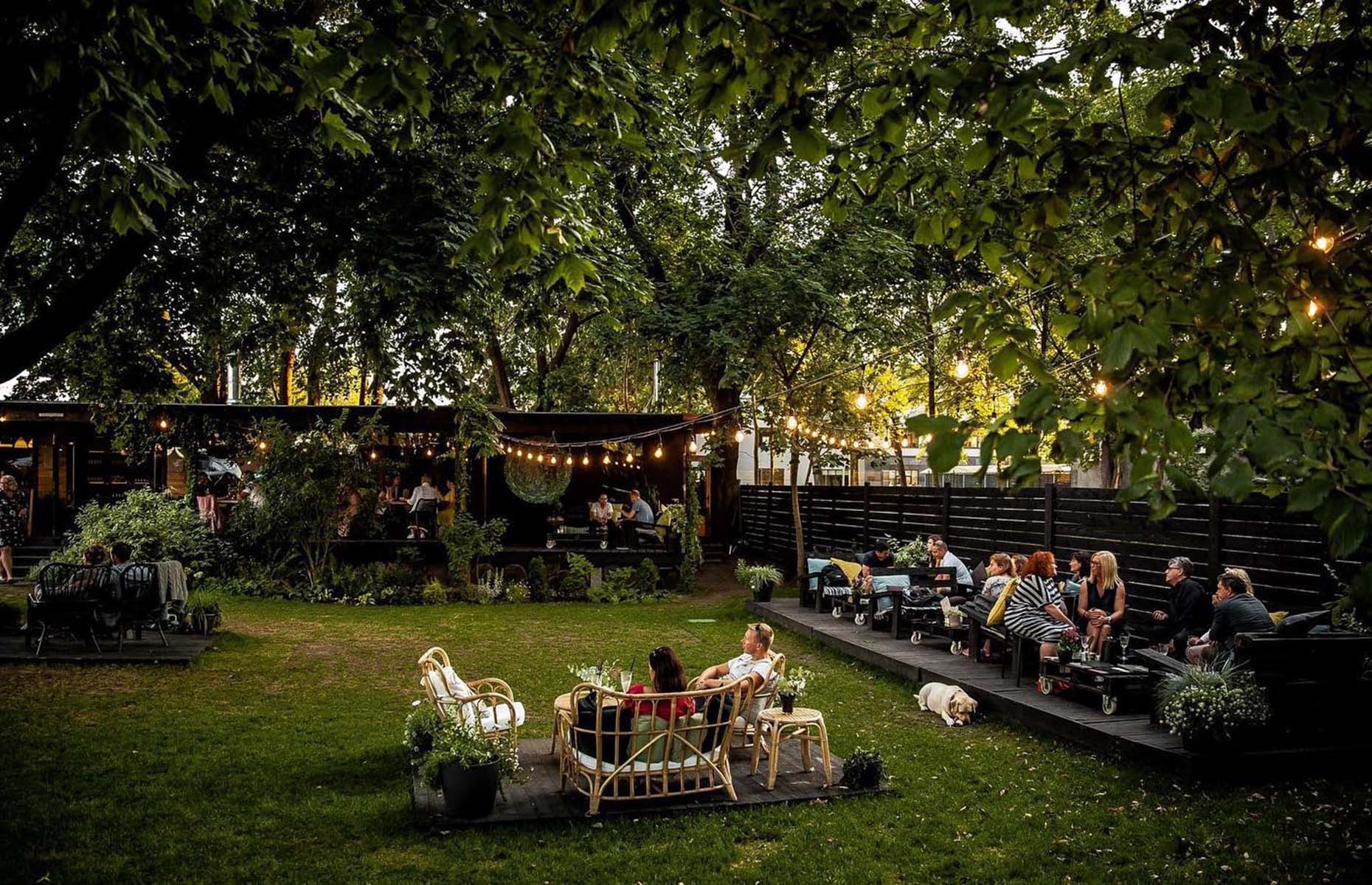
Annas Dārzs/Facebook
Fine dining
Barents: With strong grounding in the region's Nordic roots, Barents is an exceptional restaurant, dishing up Nordic cuisine through a Latvian lense. The food, centred around cold-water seafood and local and seasonal ingredients, is sourced directly from small-scale farmers and independent fishermen (tasting menu £100; mains £32-66).
Ferma: When strolling around the Art Noveau district of Riga, stop by this restaurant for a truly excellent meal that's characterised by highly seasonal Latvian produce cooked and served with global ingredients. Highlights include the ultra-local honey cake with sea buckthorn gel and sour cream ice cream (mains £21-30).
Entresol: Dreamed up by Raimonds Zommers, one of Latvia's most celebrated chefs, this fantastic restaurant pays homage to the culinary traditions of France, but still finds ways to incorporate extremely Latvian ingredients in imaginative and unique dishes. The restaurant has also spearheaded a new type of dish called knapas – a playful take on Spanish tapas, but made with decidedly Latvian produce (three knapas £11; mains £12-20).
What to bring home from Latvia
You’ll find everything you need in Riga Central Market – one of Europe’s largest food markets housed in five First World War Zeppelin aircraft hangars plus a vast outdoor trading space. Although it’s unlikely you’ll be able to bring foods like sauerkraut or smoked fish home, the vendors are extremely friendly and will let you try a little bit of their produce (most foods are sold by weight here).
Black rye bread: A typical Latvian supposedly eats around 110 lbs (50kg) of rye bread a year so a visit to Latvia wouldn't be complete without trying this staple. Try a classic black rye, a sourdough rye and one of the seeded varieties – my favourite is a sourdough rye with grated carrot and seeds.
READ MORE: 30 simple bread recipes
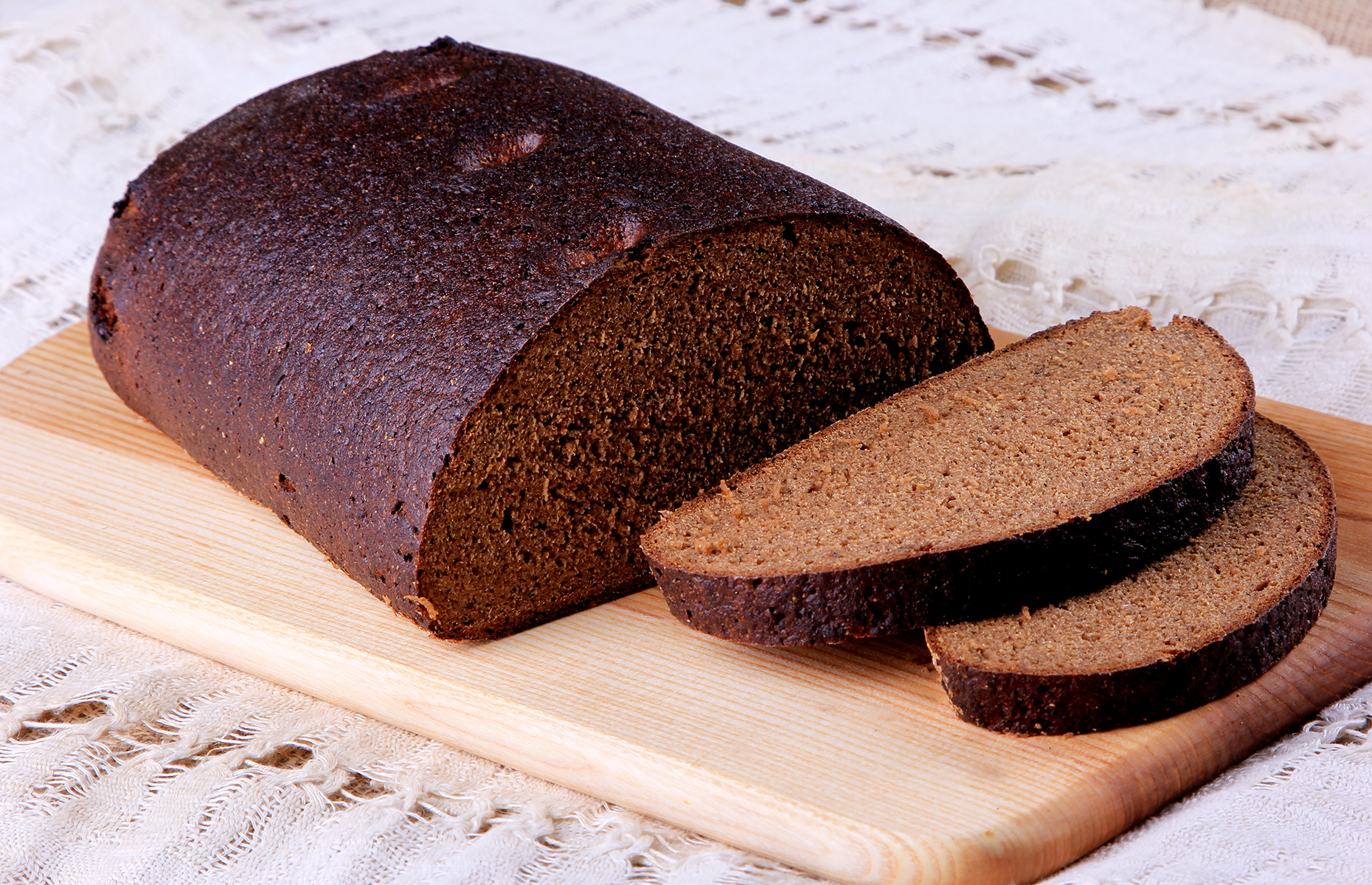
Aigars Muiznieks/Shutterstock
Wildflower honey: There are countless varieties of honey available and the market is one of the best places to buy it straight from the beekeepers and taste a little sample to choose what you like best. If you’re after something more unusual, go for buckwheat honey. It’s a lot darker and thicker than some of the other honeys and has a very particular flavour – it’s less sweet with a slightly bitter tang. If you've got a serious sweet tooth, order a honey cake as soon as you see it on the menu. Honey-infused layers of spongy pastry are stacked with sweetened sour cream icing in between and topped with a fine crumble.
Herbal tea: The variety of herbal teas sold here is sometimes hard to comprehend but if you have to pick one, go for dried linden flower tea. It has a fruity and slightly sweet aroma that matches its flavour. Linden flower tea is said to have calming properties that help to relieve stress, high blood pressure and migraines.
Riga Gold sprats in oil: Produced in Latvia since the 19th century, these tiny smoked sprat fillets in oil have always been extremely popular east of the border. The sardine-like fish are abundant in the Baltic Sea and taste brilliant when eaten with a slice of rye bread.
Lead image: Svetlana Monyakova/Shutterstock
Comments
Do you want to comment on this article? You need to be signed in for this feature
